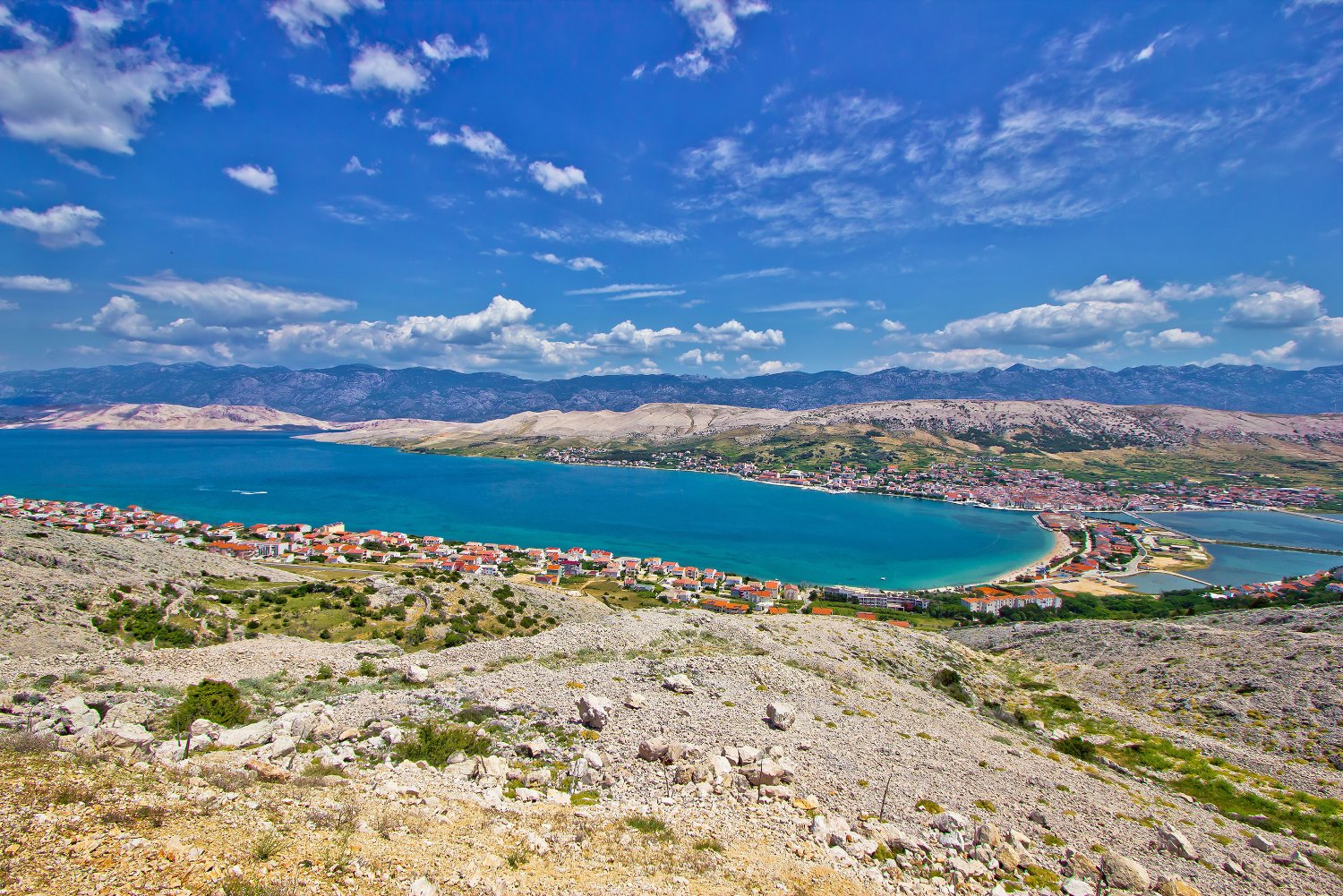This town on the gorgeous island of Pag doesn’t seem to enjoy a sedentary lifestyle.

Among almost 1300 islands on Croatia’s coast, Pag has a reputation for being one of the most enchanting ones. If your trip takes you to this Adriatic gem with fantastic moon-like landscape and numerous natural attractions, you’ll probably want to explore the homonymous tiny town that serves as Pag’s “capital”. However, check twice where you’re going, because the tiny dot of Pag, Croatia changed its position on the map multiple times during the long history of the island.
Starting from the Stone Age
Archaeological research found evidence of settlements that existed on the island as far back as the Stone Age. An Illyrian tribe called Liburnians inhabited the area in the 2nd century BC and after them came the Romans. The origin of the name of the island/city is probably the Latin word “pagus”, meaning village.
First time moving
In the times of the Roman empire, the city today known as Pag existed in a place called Caska (Kissa or Cissa in Latin). However, after Caska sank because of an earthquake, the townspeople decided to move to the south. They built a new city with walls, towers, forts, squares, churches, monasteries and numerous palaces, which was then officially known under the name of Pag. It continued to grow and in 1244 received the status of a free royal town from Hungarian king Béla IV.
The third is the lucky location
In spite of frequent battles with the municipality of Zadar, the town continued to develop and prosper. Unfortunately, at the beginning of the 15th century, the island was sold by then king Ladislav to Venetians, and the town moved once more. However, it wasn’t because Dalmatia was under the Venetian rule, but because of the rising threat of an invasion from the Ottoman empire. The citizens decided to start over once again and developed plans for a new city just a kilometre up north. The former location is today called Stari grad (literally “Old Town”) and, since it’s still relatively close to the current city core, the ruins still serve as a great tourist attraction. Don’t forget to visit it during your exploration of other famous heritage sites in Croatia!

Now that you know your facts about Pag (both the island and the city), you’re all set to go — book your accommodation at Camping Village Šimuni, the biggest and most equipped camp on the island, and enjoy your stay on this gorgeous corner of the Adriatic.